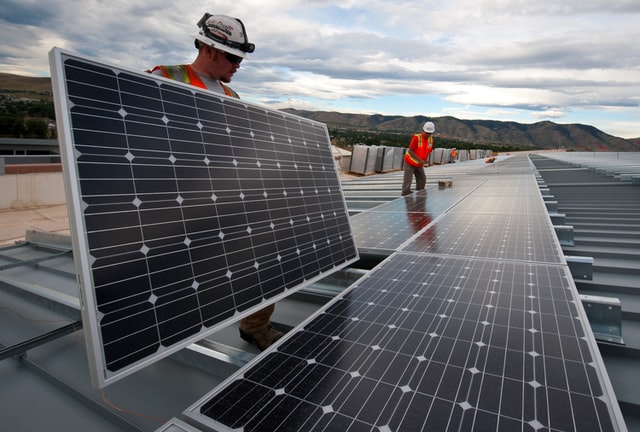In Shifting Energy Landscape, Solar Stocks Are Hot - Here’s Why

Image Source: Unsplash
The energy industry has undergone sizable shifts since the start of the second Trump Administration. Incentives and tax credits established during the Biden presidency have been rolled back, tariffs have been placed on imported solar panels, and fossil fueled have been prioritized over clean energy.
Yet, solar stocks are among the hottest on the market in 2025. If you look at the largest pure-play solar companies, some of their stocks are top performers year-to-date (YTD). Most notably, shares of SolarEdge Technologies (Nasdaq: SEDG), which makes solar inverters, have jumped 86% YTD, while Nextracker (Nasdaq: NXT), which produces equipment to optimize solar panels, has seen its stock rise 56% this year.
In addition, shares of SunRun (Nasdaq: RUN), a solar energy and storage provider, have risen 34% YTD, while Daqo New Energy (NYSE: DQ), which makes components for solar industry, has seen a 14% jump in its stock price. Further, utility-scale solar energy manufacturer and seller, First Solar (Nasdaq: FSLR), has seen its stock rise a modest 6% YTD.
Of course, not all solar stocks are hot, as the stock price of Enphase Energy (Nasdaq: ENPH), which makes inverters for the residential solar market, is down 52% while Array Technologies (Nasdaq: ARRY), which provides solar tracking solutions, is off 9%.
But on a broader scale, the Invesco Solar ETF (NYSEARCA: TAN), which tracks the gamut of solar stocks, has returned about 11% YTD, which is better than the S&P 500.
What may be even more surprising than the outperformance of solar stocks so far this year is the outlook, which analysts at Goldman Sachs say is bright.
Future’s so bright
In a recent report, analysts at Goldman Sachs Research said that despite reduced support for solar energy in the U.S. and China, the future is still bright.
That’s based on their data, which projects global solar installations to reach 914 Gigawatts (Gw) in 2030, which would be 57% higher than 2024 levels.
“The rise in solar generation is the fastest in the history of electricity,” stated Daan Struyven, co-head of global commodities research at Goldman Sachs Research.
Over the past 11 years, solar generation has reached 2,129 Terawatt-hours (Twh) and accounts for about 8% of global power generation. And while support from the Trump Administration has waned, Struyven doesn’t see it having a major impact on solar development until at least 2030.
That’s because most projects will be protected by a safe harbor provision to qualify for tax credits ahead of the 2026 deadline, Struyven said. However, he added that depending on federal government policy, downside risks to solar installations could emerge from 2028.
Other key drivers for solar stocks
The increase in solar installations over the next few years will be fueled in large part by reduced costs, according to Struyven and his team at Goldman Sachs Research.
“The investment costs have fallen faster for panels than for any other investment good in modern history, including computers and communication equipment,” Struyven said.
Goldman Sachs Research estimates that solar panel costs could drop 20% if the output continues to surge. This is due to several factors, including economies of scale, manufacturing efficiencies, improved technologies, and falling interest rates. The industry also benefits from the fact that it “costs nothing to produce every additional unit of electricity beyond the original cost of installing the panels and the ongoing cost of maintaining them.”
Also, the analysts noted that because panels are relatively small and are available at constant fixed prices, they make it easier to create a decentralized grid. By comparison, thermal or nuclear power stations are typically large facilities with higher fixed costs.
“Any slowing in solar growth is likely to come from reduced policy support and from power supply volatility rather than from solar panel supply bottlenecks,” Struyven said.
Investors should do their own research on individual solar stocks before investing or dip their toes in with an ETF like the Invesco Solar ETF. But, as Goldman Sachs Research points out, investors should know that despite headlines and policy changes, solar stocks are not only growing but have solid potential upside.
More By This Author:
How Rate Cuts Could Impact Stock Market Returns
Apple Bounces 10% After Committing $600b To U.S. Manufacturing
Coinbase Stock Suffers Downgrade After Disappointing Q2 Earnings
Disclaimer: This article is NOT an investment recommendation, please see our disclaimer - Get our 10 ...
more


